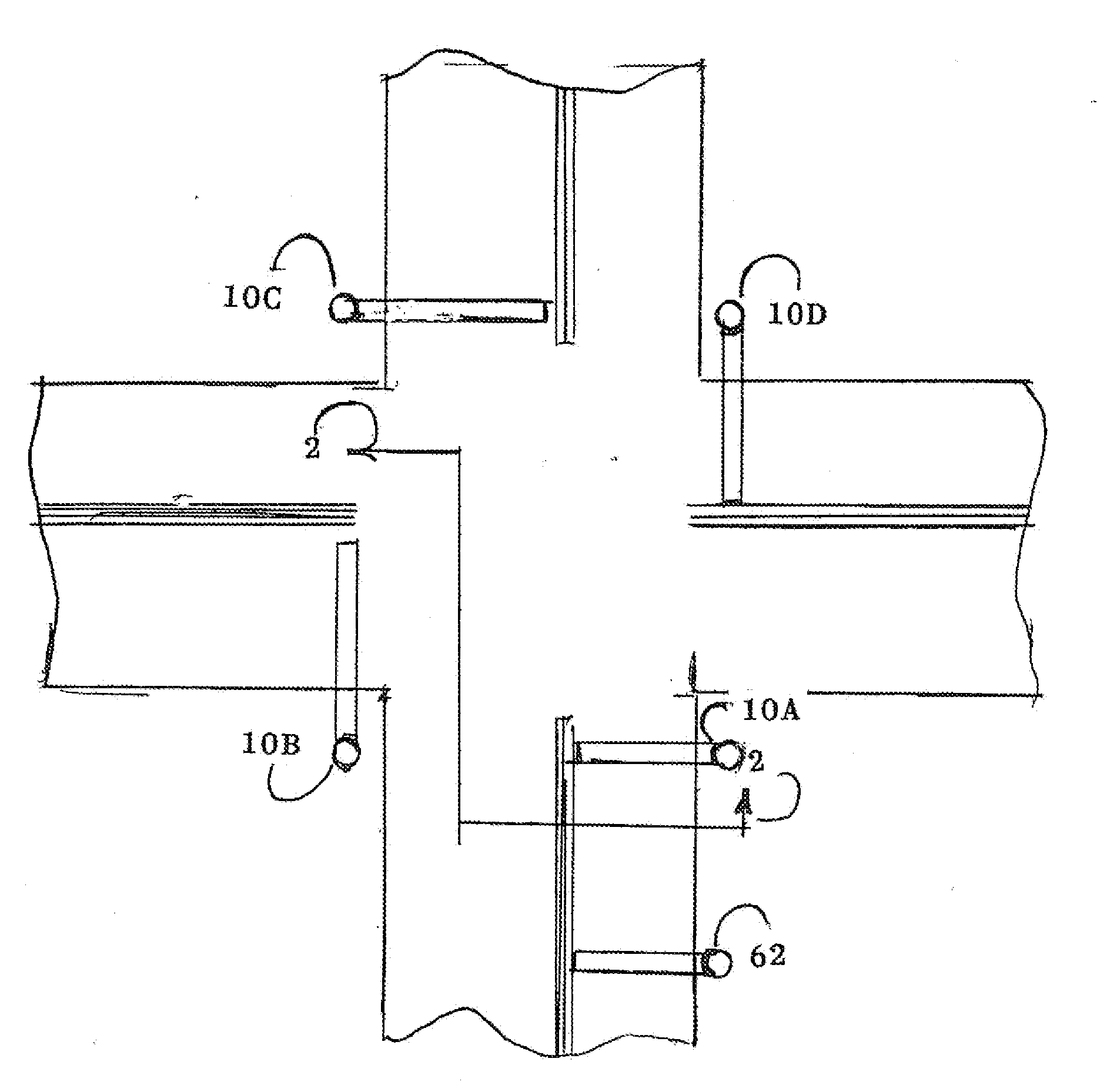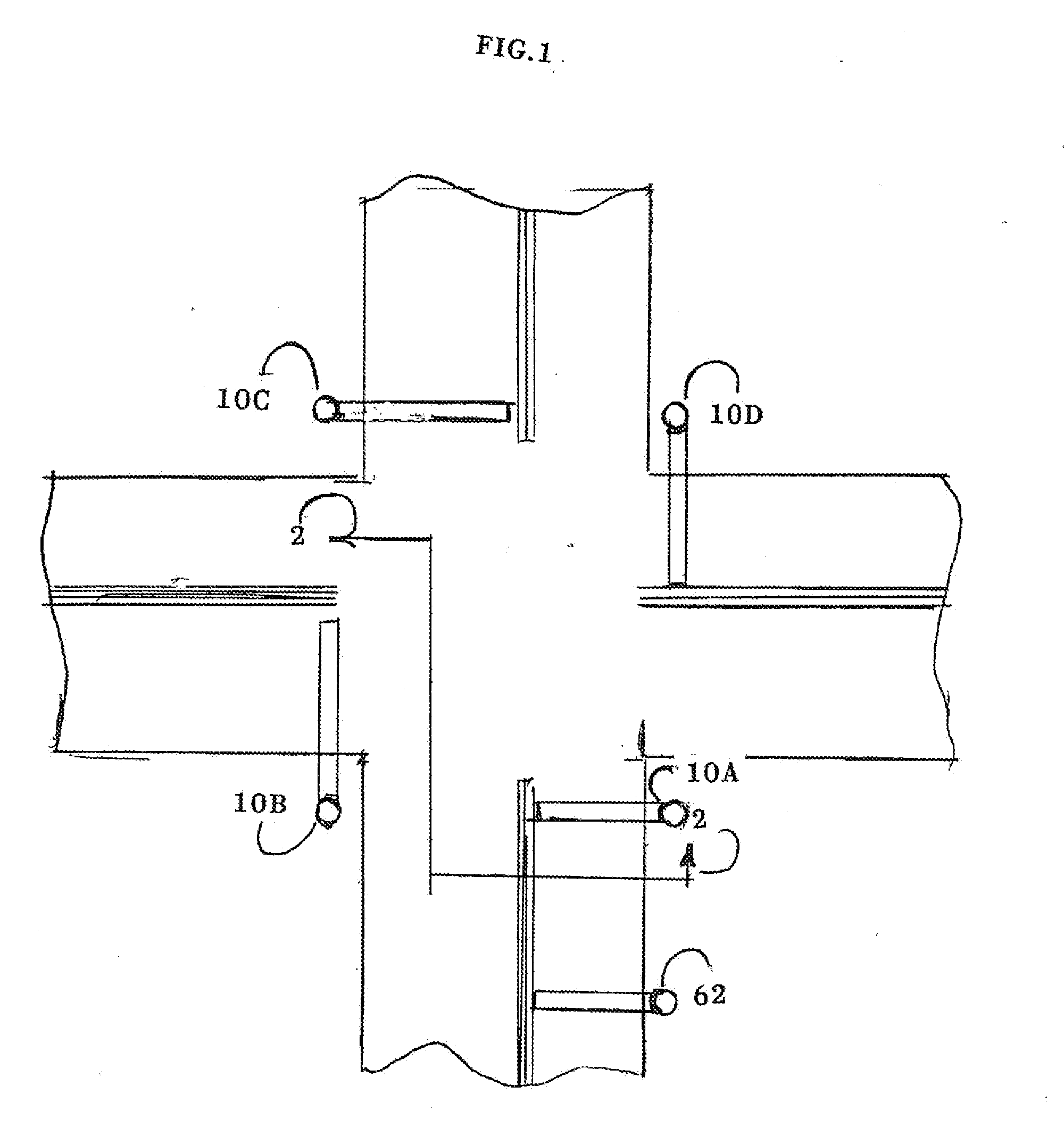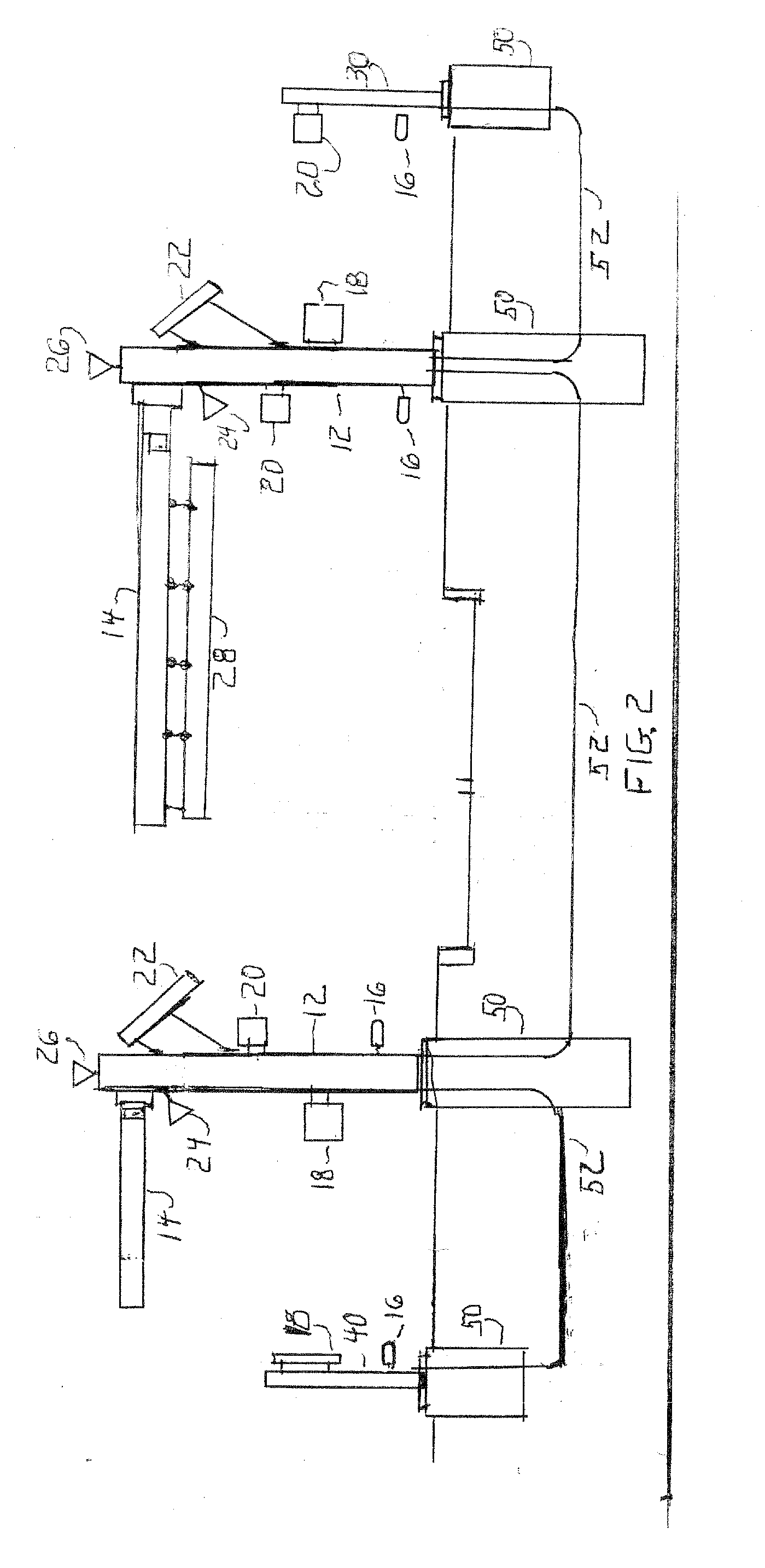Computerized traffic signal system
a traffic signal and computerized technology, applied in the field of improved traffic signal systems, can solve the problems of increasing motorist confusion at intersections, increasing the risk of accidents, and hardship for motorists and individuals alik
- Summary
- Abstract
- Description
- Claims
- Application Information
AI Technical Summary
Benefits of technology
Problems solved by technology
Method used
Image
Examples
Embodiment Construction
[0047]The improved traffic system described herein can bring transportation and signal intersections into the new information age. By retrofitting and building new intersections, we can eliminate, or at least reduce, the previously described problems.
[0048]The simple intersection, illustrated in FIGS. 1 and 2 consists of four corners with one or two lanes going in each direction. Before we get into more complex applications it is easier to explain the most elementary design. In FIG. 1, a lane traffic signal 10A, 10B, 10C, 10D is provided at each of the intersection. The signals at a given intersection are referred to herein as a signal cluster 10.
[0049]As seen FIG. 2, each traffic signal 10A, 10B includes a vertical mast 12 supporting a horizontal arm 14 in a cantilevered manner. (It should be understand that cables and other conventional means may be used to support the arms on the mast. These known elements have been omitted for the sake of clarity). Attached to mast there are pro...
PUM
 Login to View More
Login to View More Abstract
Description
Claims
Application Information
 Login to View More
Login to View More - R&D
- Intellectual Property
- Life Sciences
- Materials
- Tech Scout
- Unparalleled Data Quality
- Higher Quality Content
- 60% Fewer Hallucinations
Browse by: Latest US Patents, China's latest patents, Technical Efficacy Thesaurus, Application Domain, Technology Topic, Popular Technical Reports.
© 2025 PatSnap. All rights reserved.Legal|Privacy policy|Modern Slavery Act Transparency Statement|Sitemap|About US| Contact US: help@patsnap.com



